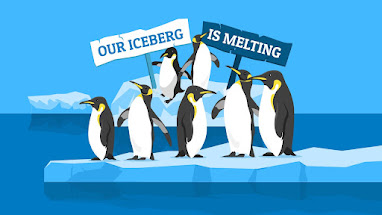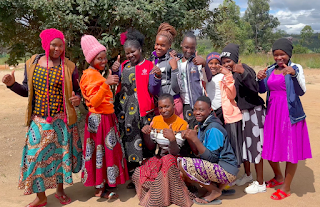How to be an actor of change
/ENGLISH VERSION BELOW/
Dans le cadre de mon cours de management du changement que j'ai l'occasion de suivre à l'université d'Iringa, j'ai lu le livre "our iceberg is melting" de John Kotter et Holger Rathgeber. Je l'avais découvert il y a deux ans, avant de commencer ma formation et c'est avec un regard différent que je me suis replongée dans les 140 pages. A travers la puissance de la fable, ce livre peut aider tout acteur du changement à accompagner ses équipes à faire face à de nouveaux paradigmes. Voici les 8 étapes du changement selon Kotter :
1. Créer un sentiment d’urgence
2. Constituer une équipe de conduite du changement
3. Définir la vision et un plan d’action
4. Communiquer
5. Engager les gens à agir
6. Célébrer les victoires à court-terme
7. Ne pas lâcher
8. Créer une nouvelle culture
Ce sujet résonne particulièrement en moi en ce moment, car je suis dans un environnement complètement nouveau et doit constamment m'adapter, sans pouvoir me rattacher à une certaine zone de confort. De ce livre je retiens ces principaux apprentissages :
- Un changement se prépare et peut prendre du temps
- La communication et la transparence sont primordiales, non seulement pour faire comprendre aux gens la raison du changement (sa vision), mais aussi pour les convaincre qu'il faut agir et les engager dans le processus
- Le changement se pilote de préférence par une équipe, surtout si de nombreuses personnes sont concernées
- Les compétences principales pour accompagner un changement sont : l'esprit analytique, le leadership, la communication interpersonnelle, l'expertise du sujet et la légitimité/l'autorité.
Et surtout..
- Le ressenti et le visuel auront toujours bien plus d'impact que le rationnel et l'analyse pour engager et rassembler les gens autour d'une vision commune.
C'est d'ailleurs ce que les auteurs ont très bien démontré en expliquant une théorie à travers une fable, en utilisant l'humour et beaucoup de visuels pour rendre la lecture agréable et vivante. A travers cela, ils peuvent toucher autant un enfant qu'un manager et chaque personne repartira avec des apprentissages pour sa vie en général.
Plus d'informations sur ce livre : lien.
As part of my change management course at the University of Iringa, I read the book "our iceberg is melting" by John Kotter and Holger Rathgeber. I had discovered it two years ago, before starting my training, and it is with a different perspective that I immersed myself in the 140 pages. Through the power of the fable, this book can help any actor of change to accompany his teams to face new paradigms. Here are the 8 stages of change according to Kotter:
1. Create a sense of urgency
2. Build a change management team
3. Define the vision and an action plan
4. Communicate
5. Engage people to act
6. Celebrate short-term victories
7. Don't give up
8. Creating a new culture
This topic resonates particularly with me at the moment, as I am in a completely new environment and have to constantly adapt, without being able to attach myself to a certain comfort zone. From this book I retain these main learnings:
- Change is prepared and can take time
- Communication and transparency are essential, not only to make people understand the reason for the change (its vision), but also to convince them that it is necessary to act and to engage them in the process
- Change is best driven by a team, especially if many people are involved
- The main skills to accompany a change are: analytical mind, leadership, interpersonal communication, subject expertise and legitimacy/authority.
And above all...
Feelings and visuals will always have a much greater impact than rationality and analysis in engaging and bringing people together around a common vision.
This is what the authors have demonstrated very well by explaining a theory through a fable, using humour and lots of visuals to make the reading enjoyable and lively. Through this, they can reach a child as well as a manager and each person will leave with learnings for their life in general.
More information about this book: link.



.jpeg)
Comments
Post a Comment